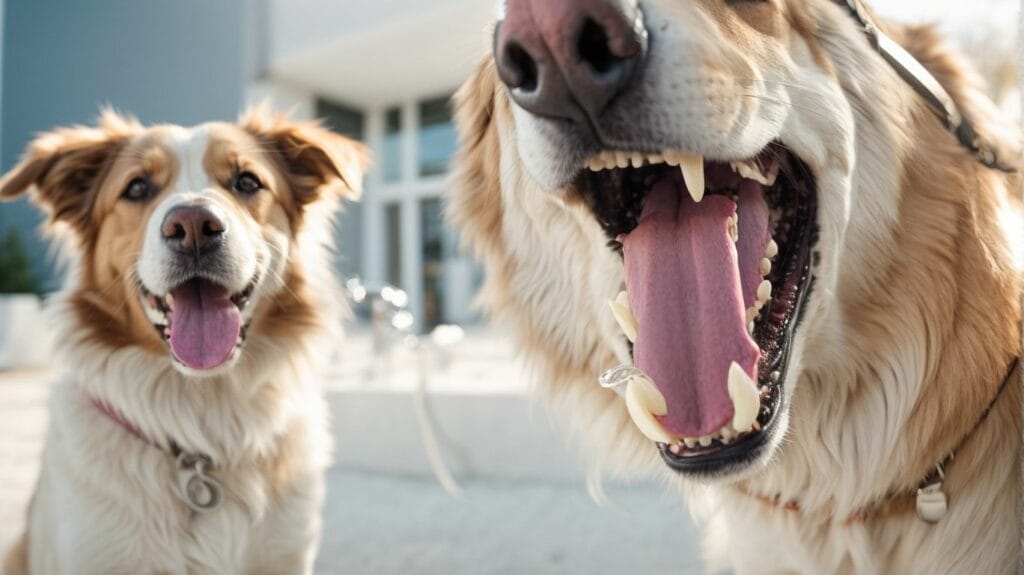Table of Contents
Add a header to begin generating the table of contents
Dental care is an important aspect of overall health and well-being for dogs, just as it is for humans. Understanding the dental anatomy of dogs and the significance of proper dental care is crucial for every dog owner. This article will explore various aspects of dental health in dogs, from their dental anatomy to common dental problems and preventive measures.
Dogs do indeed have teeth, and their dental anatomy is unique to their species. Canine teeth are specially adapted for their diet and serve various functions. Dogs have different types of teeth, including incisors, canines, premolars, and molars. The number of teeth in a dog’s mouth can vary depending on their age and breed.
Proper dental care for dogs is essential for maintaining their overall health. Neglecting their dental health can lead to several problems. Dental plaque and tartar buildup, gingivitis, periodontal disease, broken or cracked teeth, and malocclusion are some common dental problems that dogs can experience. Recognizing the signs of dental problems in dogs, such as bad breath, excessive drooling, red or swollen gums, and difficulty eating or chewing, is important for early intervention.
To take care of your dog’s teeth, regular brushing and dental cleanings are vital. Providing dental chew toys and treats can also help maintain their oral hygiene. Feeding a healthy diet and scheduling regular veterinary check-ups are additional measures to ensure your dog’s dental health.




Remember, regular veterinary check-ups, along with proper at-home dental care, can help prevent dental problems and maintain your dog’s overall health and well-being.




Key Takeaways:
- Do Dogs Have Teeth?: Dogs indeed have teeth, just like humans. Understanding the dental anatomy of dogs helps in providing appropriate dental care.
- Importance of Dental Care: Proper dental care is crucial for dogs as neglecting it can lead to dental problems such as plaque buildup, periodontal disease, and broken teeth.
- Caring for Dog’s Teeth: Regular brushing, dental cleanings, providing dental chew toys, feeding a healthy diet, and regular veterinary check-ups contribute to maintaining a dog’s dental health.
Do Dogs Have Teeth?
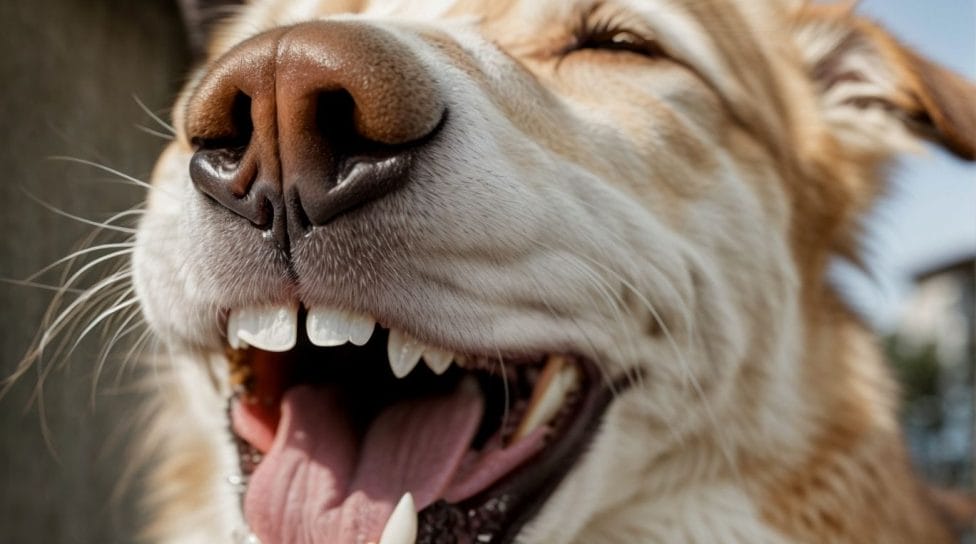
Photo Credits: Petnarnia.Com by Wayne Nguyen
Do Dogs Have Teeth? Dogs, just like humans, do have teeth. These teeth serve various important purposes such as eating, biting, and chewing. It is fascinating to know that dogs have two sets of teeth. Their first set, known as deciduous teeth, are temporary and later replaced by permanent teeth. Puppies usually start getting their deciduous teeth at around 3-4 weeks old, and they begin losing them when they are approximately 3-7 months old. Once fully grown, adult dogs typically have a total of 42 teeth. Ensuring proper dental care for dogs is essential. Regularly brushing their teeth and providing dental treats or toys are helpful measures to maintain good dental hygiene. Additionally, seeking advice from a veterinarian for dental care is highly recommended.What is the Dental Anatomy of Dogs?
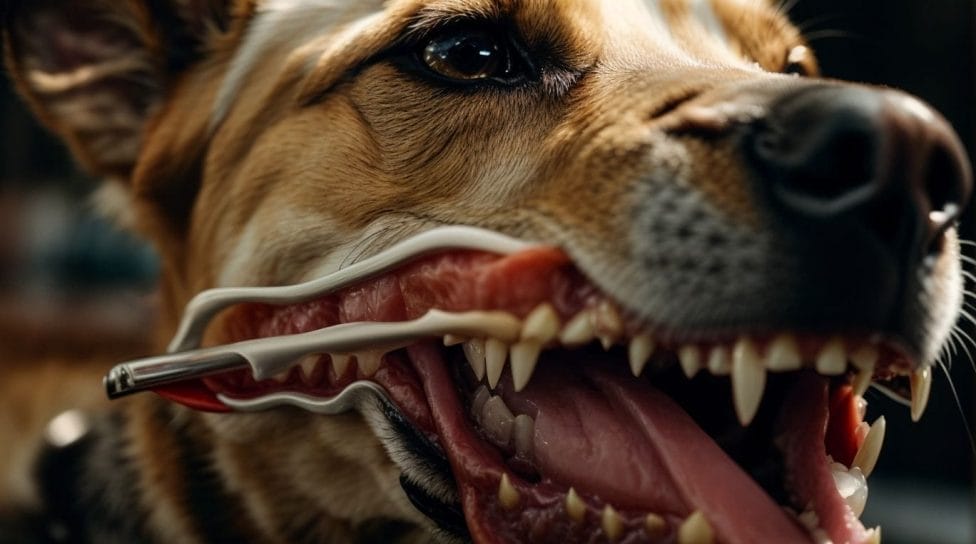
Photo Credits: Petnarnia.Com by Christopher Adams
When it comes to the dental anatomy of dogs, it is important to consider a few key things. Understanding these aspects can help you take better care of your pet’s oral health. Dogs have four different types of teeth – incisors, canines, premolars, and molars. The gums should be pink and firm. If you notice any redness, swelling, or bleeding, it might indicate an issue. Regular brushing and professional cleaning can prevent dental problems caused by plaque and tartar buildup. Persistent bad breath in dogs may be a sign of dental disease and should be addressed by a veterinarian. Tooth loss can occur due to decay, trauma, or periodontal disease. To ensure your dog’s dental health, it is advisable to speak to your veterinarian about regular cleanings and home care instructions. Additionally, feeding a balanced diet and providing dental chews can help maintain their oral hygiene.What Types of Teeth Do Dogs Have?
Dogs have four types of teeth: incisors, canines, premolars, and molars. Incisors are used for nibbling and grooming, canines for tearing and grasping, premolars for grinding and crushing, and molars for chewing and grinding food. Adult dogs usually have 42 teeth, with puppies having fewer teeth initially. Understanding the types of teeth dogs have is important for their dental care. Regular brushing, providing dental chew toys, and feeding a healthy diet can help maintain their oral health. Fun fact: Dogs have stronger jaws and sharper teeth compared to humans, allowing them to chew through bones and tough food. What Types of Teeth Do Dogs Have?How Many Teeth Do Dogs Have?
How Many Teeth Do Dogs Have? Adult dogs typically have 42 permanent teeth. This includes 20 teeth in the upper jaw and 22 teeth in the lower jaw. Puppies, on the other hand, have 28 deciduous teeth which are eventually replaced by their permanent teeth. The dental anatomy of dogs consists of incisors, canines, premolars, and molars. Incisors are used for nibbling and grooming, canines for tearing and gripping, premolars for crushing and grinding, and molars for grinding food. It’s important to understand the number and types of teeth dogs have in order to provide appropriate dental care and ensure their overall health and well-being.Why is Dental Care Important for Dogs?
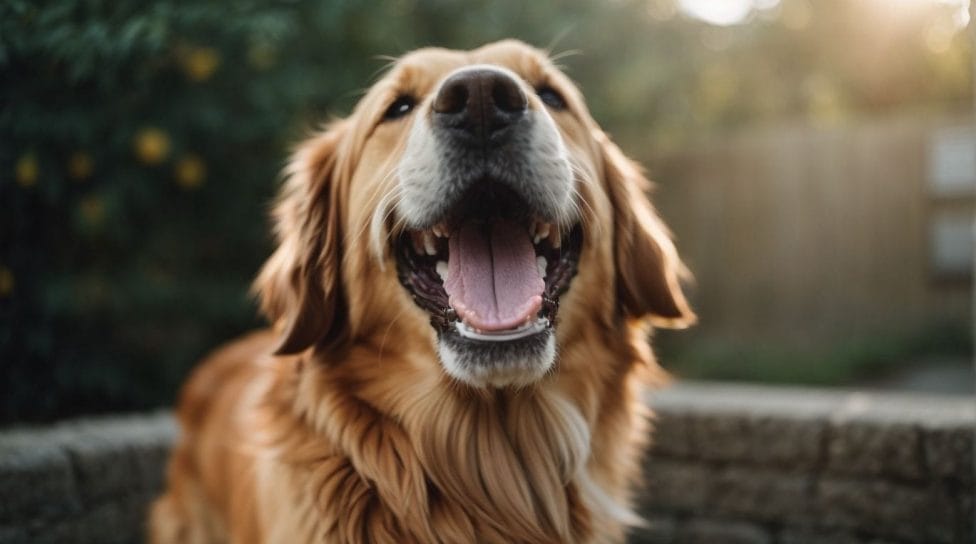
Photo Credits: Petnarnia.Com by Jordan Johnson
Dental care is crucial for dogs to maintain their overall health and well-being. Just like humans, dogs can develop dental problems such as gum disease, tooth decay, and bad breath. Ignoring dental care can lead to pain, discomfort, and even tooth loss for our furry friends. Regular brushing, dental chews, and professional cleanings are essential to prevent dental issues and keep their teeth clean and healthy. So, why is dental care important for dogs? Prioritize your dog’s oral hygiene to prevent potential health risks and ensure a happy and healthy life for your canine companion.What Happens if Dogs Don’t Receive Proper Dental Care?
What Happens if Dogs Don’t Receive Proper Dental Care? Without proper dental care, dogs can experience a range of issues that directly impact their overall health and quality of life. Neglecting dental care in dogs can lead to the development of dental plaque and tartar buildup, which can in turn lead to the onset of gingivitis and periodontal disease. These dental conditions can cause pain, inflammation, and infection in the gums and teeth, ultimately resulting in tooth loss for the dog. In addition to the physical discomfort, dogs may also face challenges when it comes to consuming food or chewing. Bad breath, excessive drooling, and red, swollen, or bleeding gums may also be noted as signs of poor dental health in dogs. Prompt recognition of these symptoms is crucial, and seeking veterinary care in a timely manner can prevent the occurrence of further complications. Maintaining proper dental care for dogs, which includes regular brushing, dental cleanings, and a well-balanced diet, is of utmost importance for their overall well-being.How to Take Care of Your Dog’s Teeth?
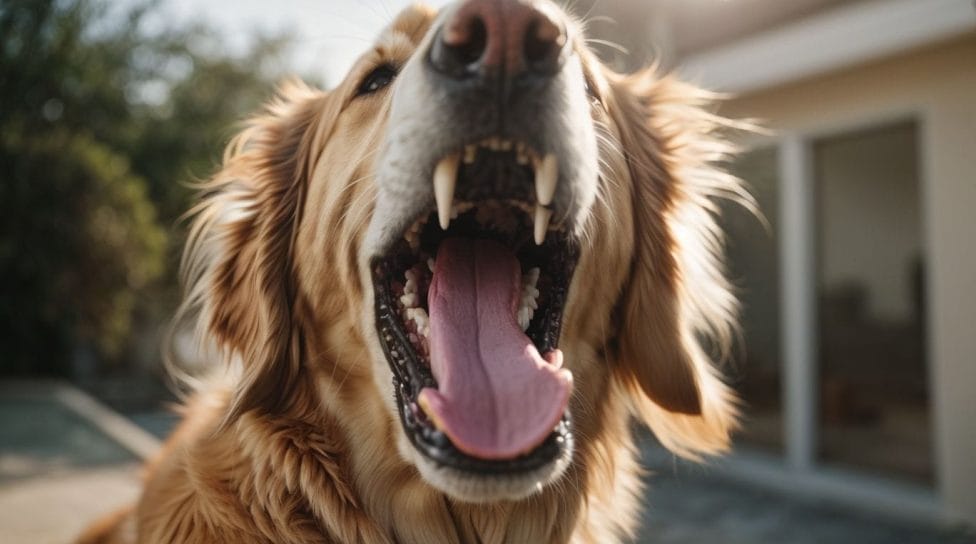
Photo Credits: Petnarnia.Com by Brandon Adams
Taking care of your dog’s teeth is essential for their overall health and wellbeing. In this section, we’ll explore effective strategies and practices to ensure proper oral hygiene for your furry friend. From regular brushing and dental cleanings to providing dental chew toys and treats, we’ll cover all the bases. We’ll discuss the importance of feeding a healthy diet and scheduling regular veterinary check-ups to maintain your dog’s dental health. Let’s dive into these key aspects and keep those pearly whites shining!Regular Brushing and Dental Cleanings
To maintain good dental health in dogs, regular brushing and dental cleanings are essential. Here are some steps to follow:- Start by gradually introducing your dog to toothbrushing, incorporating regular brushing and dental cleanings using a pet toothbrush and toothpaste.
- With a gentle circular motion, focus on the gum line while brushing your dog’s teeth.
- Make sure to brush for about 2 minutes, at least 2-3 times a week, to ensure regular brushing and dental cleanings.
- If your dog is not comfortable with brushing, consider using dental wipes or dental sprays in addition to regular brushing and dental cleanings.
- Remember to schedule regular dental cleanings with your veterinarian to effectively remove any tartar or plaque buildup and ensure regular brushing and dental cleanings.
Providing Dental Chew Toys and Treats
Providing dental chew toys and treats is an essential aspect of maintaining your dog’s oral health.- Incorporate dental chew toys: Ensure you select toys specifically designed to promote dental health, such as those featuring ridges or bristles that aid in plaque and tartar removal.
- Treats for dental care: Seek treats that are intended to enhance dental hygiene, containing ingredients like chlorophyll or enzymes that assist in teeth cleaning.
- Consider texture and size: Make sure the chew toys and treats are suitable for your dog’s size and chewing habits to prevent choking or tooth damage.
- Supervision: Always supervise your dog while they chew on toys or indulge in dental treats to prevent accidents or the ingestion of large pieces.
Feeding a Healthy Diet
Feeding a healthy diet is crucial for maintaining your dog’s dental health. Follow these helpful tips to ensure your furry friend’s nutritional needs are met:- Provide a well-balanced and complete diet: It is important to choose high-quality dog food that fulfills your dog’s nutritional requirements. Look for reputable brands that contain vital nutrients like vitamins C and D, which are essential for maintaining good dental health.
- Avoid sugary and processed foods: These types of foods can contribute to dental issues such as the buildup of plaque and tartar. Opt for natural and low-sugar treats as a healthier alternative.
- Incorporate foods that promote dental health: Including crunchy fruits and vegetables like apples and carrots in your dog’s diet can naturally help clean their teeth. These dental-friendly foods play a significant role in maintaining oral hygiene.
- Consider using dental chews and treats: Dental chews specifically formulated to enhance oral hygiene can be beneficial in removing plaque and improving breath freshness. Look for dental products designed to promote oral health.
Regular Veterinary Check-ups
Regular veterinary check-ups are essential for maintaining your dog’s dental health. During these appointments, the veterinarian will thoroughly examine your dog’s teeth and gums to identify any potential issues. Here are the steps involved in regular veterinary check-ups for your dog’s teeth:| 1. | The veterinarian will perform a visual examination of your dog’s mouth, looking for signs of dental problems. |
| 2. | If necessary, the veterinarian may recommend dental x-rays to assess the health of the teeth and roots. |
| 3. | Professional dental cleaning may be performed to remove tartar and plaque buildup. |
| 4. | The veterinarian will check for any signs of gum disease or oral infections. |
| 5. | If there are any dental issues, the veterinarian will provide appropriate treatment options and advice on at-home dental care. |
Common Dental Problems in Dogs
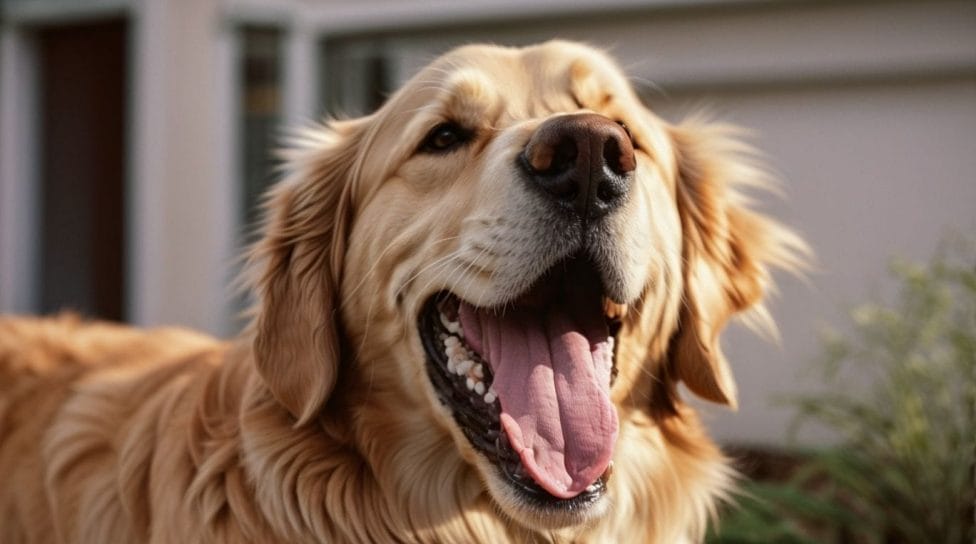
Photo Credits: Petnarnia.Com by Donald Sanchez
Common dental problems in dogs are a serious concern for pet owners. From dental plaque and tartar buildup to gingivitis and periodontal disease, broken or cracked teeth, and malocclusion, our beloved furry friends can experience a range of dental issues. In this section, we will uncover the challenges faced by dogs when it comes to their teeth and explore how these problems can affect their overall health and well-being. So, get ready to dive into the world of canine dental care and discover the importance of maintaining good oral hygiene for our four-legged companions.Dental Plaque and Tartar Buildup
Dental plaque and tartar buildup, which are common dental problems in dogs, can lead to serious oral health issues if left untreated. Dental plaque, a sticky film of bacteria that forms on the teeth, and tartar, a hardened form of plaque that can only be removed by a veterinarian, contribute to this problem. This buildup of dental plaque and tartar can result in gum inflammation, bad breath, tooth decay, and tooth loss in dogs. To prevent the development of dental plaque and tartar buildup, it is important to prioritize regular dental care. This comprises of brushing your dog’s teeth on a regular basis, providing dental chew toys, feeding them a healthy diet, and scheduling routine veterinary check-ups for professional dental cleanings. By implementing these measures, you can effectively maintain your dog’s teeth clean and healthy.Gingivitis and Periodontal Disease
Gingivitis and periodontal disease are common dental problems in dogs that can lead to serious health issues if left untreated. Gingivitis, characterized by the inflammation of the gums, is a prevalent dental problem in dogs. It is primarily caused by the buildup of plaque and tartar. However, if not dealt with promptly, this condition can progress to periodontal disease, which negatively impacts the supportive tissues of the teeth. Signs of these conditions include red, swollen gums, bad breath, and difficulty eating. Recognizing the signs of both gingivitis and periodontal disease is crucial. Indications of these dental issues encompass red and swollen gums, persistent halitosis, as well as difficulties in consuming food. To prevent and manage gingivitis and periodontal disease, regular dental care is necessary. Maintaining proper oral hygiene is paramount in preventing and managing gingivitis and periodontal disease in dogs. This includes brushing your dog’s teeth regularly, providing dental chew toys, feeding a healthy diet, and scheduling regular veterinary check-ups. To achieve this, it is important to brush your dog’s teeth on a regular basis, offer dental chew toys for additional oral stimulation, provide a balanced and nutritious diet, and ensure your dog undergoes periodic veterinary check-ups. Early detection and treatment play a crucial role in maintaining your dog’s dental health. Early detection and timely intervention are pivotal in preserving your dog’s dental health and preventing the progression of these dental conditions.Broken or Cracked Teeth
Broken or cracked teeth in dogs can lead to pain, infection, and difficulty eating. These dental issues can occur due to trauma, chewing on hard objects, or underlying dental diseases. Dogs with broken or cracked teeth may exhibit symptoms such as oral bleeding, drooling, or reluctance to eat. It is vital to consult a veterinarian if you suspect your dog is experiencing dental problems. Treatment options for broken or cracked teeth may include dental extractions, root canals, or crowns. To prevent such dental issues, it is advisable to refrain from giving your dog hard bones or toys that are too hard. Instead, consider opting for dental chew toys specially designed to promote dental health.Malocclusion
Malocclusion is a condition in which a dog’s teeth do not align correctly, causing dental problems and discomfort. Some dogs may have an overbite, underbite, or crooked teeth. Malocclusion can lead to issues such as difficulty chewing, tooth decay, and gum disease. Regular dental check-ups are important for identifying and treating malocclusion in dogs. Special dental treatments may be required, such as tooth extraction or orthodontic procedures to correct the alignment of the teeth. It’s essential to consult a veterinarian if you suspect your dog has malocclusion. A pro-tip: Provide your dog with dental chew toys specifically designed to help improve their dental alignment and prevent malocclusion.Signs of Dental Problems in Dogs
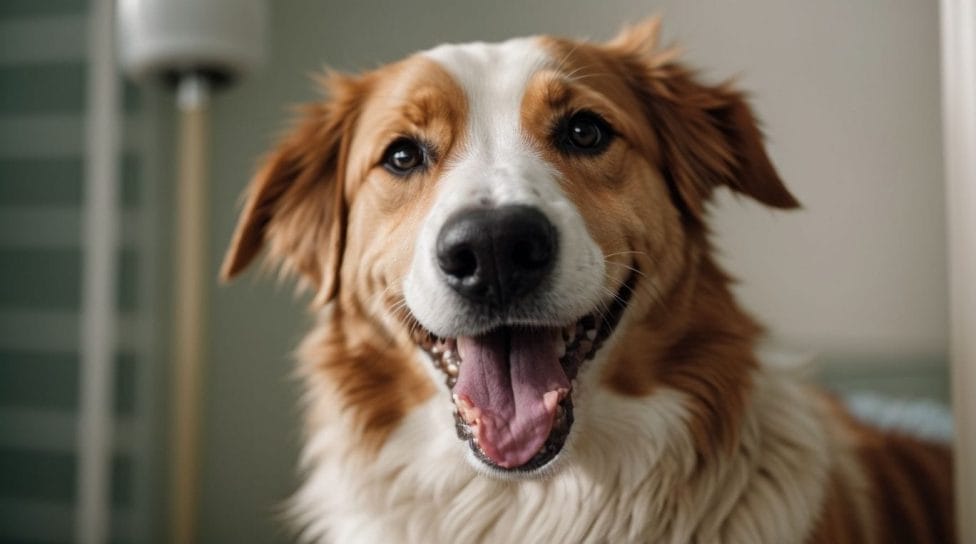
Photo Credits: Petnarnia.Com by Mark King
Discover how to identify potential dental issues in your furry companions. From bad breath to red, swollen gums, we’ll explore signs that could indicate dental problems in dogs. Watch out for excessive drooling or difficulties while eating or chewing. By recognizing these symptoms, you can ensure that your dog receives the necessary dental care to maintain their overall health and well-being.Bad Breath
Bad Breath “Bad breath, also referred to as halitosis, is a prevalent dental issue in canines. It can arise due to inadequate oral hygiene, dental infections, or underlying health conditions. To address the problem of bad breath in dogs, it is crucial to prioritize regular dental care. This entails brushing their teeth on a regular basis, providing them with dental chew toys and treats, offering a nutritious diet, and ensuring scheduled veterinary check-ups. If the problem of bad breath persists despite taking these measures, it is essential to seek advice from a veterinarian. Fun fact: Did you know that dogs possess more than 600 muscles in their bodies?”Excessive Drooling
Excessive drooling in dogs can be a sign of various dental issues. It is important to pay attention to this symptom and take appropriate action. Excessive drooling may indicate gum disease, tooth infection, or even something lodged in the mouth. To address this problem, regular dental care is essential. This includes brushing your dog’s teeth, providing dental chew toys, and feeding a healthy diet. Regular veterinary check-ups are also crucial in maintaining your dog’s dental health. If excessive drooling persists or is accompanied by other concerning symptoms, it is important to consult a veterinarian for proper diagnosis and treatment. Taking preventive measures will help ensure your furry friend’s dental well-being.Red, Swollen, or Bleeding Gums
Red, swollen, or bleeding gums in dogs can be a sign of gum disease or infection. This condition, known as gingivitis, or bleeding gums, is caused by a buildup of plaque and tartar on the teeth. If left untreated, it can lead to more serious dental problems, such as periodontal disease. To prevent gum issues, regular dental care is essential. This includes brushing your dog’s teeth, providing dental chew toys, feeding a healthy diet, and scheduling regular veterinary check-ups. If you notice any signs of red, swollen, or bleeding gums, or bleeding gums, it is important to consult a veterinarian for proper diagnosis and treatment. Fact: Approximately 80% of dogs over the age of three have some form of dental disease.Difficulty Eating or Chewing
If your dog is having difficulty eating or chewing, it could indicate an underlying dental problem. Here are a few points to take into consideration:- Broken or cracked teeth: These can result in pain and make it challenging for your dog to properly chew their food.
- Gingivitis and periodontal disease: Inflamed gums and dental infections can cause discomfort while eating for dogs.
- Malocclusion: Misaligned teeth can make biting and chewing difficult.
- These issues may lead to weight loss, nutritional deficiencies, and overall discomfort for your dog.
- If you observe any problems with eating or chewing, it is crucial to seek veterinary care to address the underlying dental problems.
When Should You See a Veterinarian?
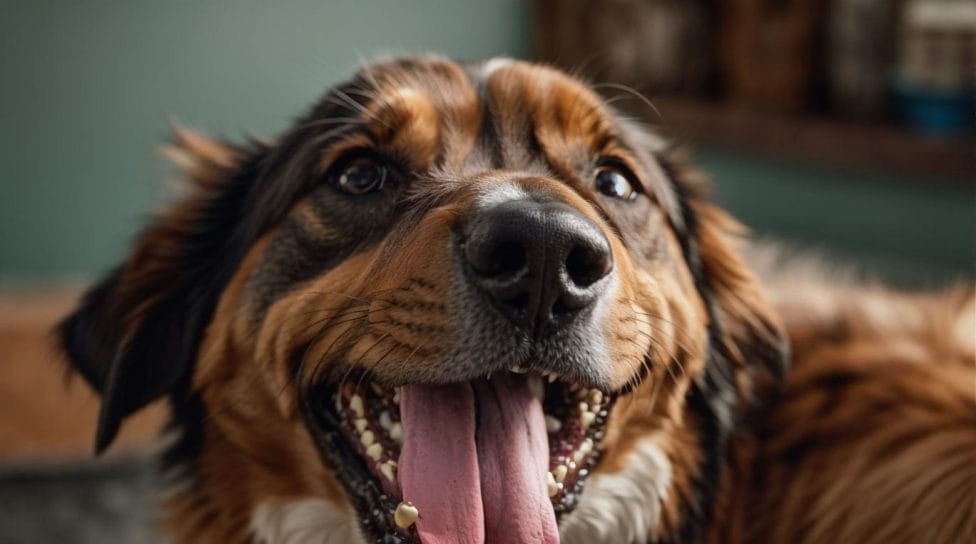
Photo Credits: Petnarnia.Com by Dennis Baker
When it comes to your dog’s teeth, it is important to know when to seek veterinary care. When Should You See a Veterinarian? Regular check-ups and dental cleanings can help prevent serious dental issues. You should see a veterinarian when you notice any signs of dental problems such as bad breath, broken teeth, swelling, or difficulty eating. Your veterinarian will be able to assess your dog’s oral health and recommend appropriate treatment. Remember, early intervention is key to maintaining your dog’s dental health and overall well-being. In a true historical incident, a dog named Max developed severe gum disease. His owner, Sarah, noticed Max was struggling to eat and had foul breath. Concerned, Sarah took Max to the veterinarian who diagnosed him with advanced periodontal disease. Max underwent a thorough dental cleaning and Sarah learned how to properly care for his teeth. Since then, regular veterinary check-ups have helped maintain Max’s oral health, ensuring he continues to enjoy his favorite treats.Preventive Measures for Dog’s Dental Health
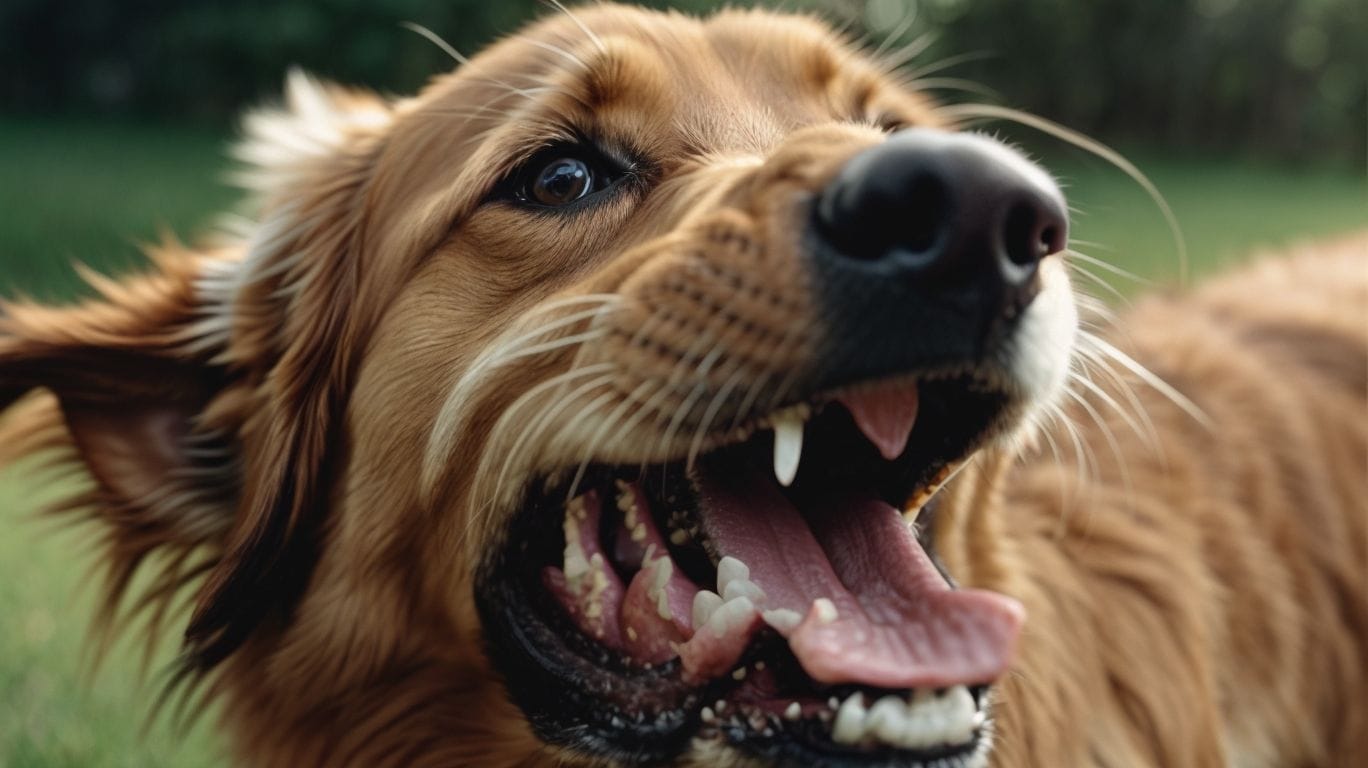
Photo Credits: Petnarnia.Com by Jeremy Anderson
To maintain your dog’s dental health, it’s important to incorporate preventive measures for dog’s dental health. Here are some key steps you can take to implement these preventive measures:- Regular teeth brushing: Brush your dog’s teeth at least 2-3 times a week using a dog-friendly toothbrush and toothpaste.
- Dental chews and toys: Provide your dog with dental chews or toys specifically designed to promote oral health.
- Healthy diet: Feed your dog a balanced diet that includes dental-friendly foods, such as crunchy kibble or dental treats.
- Regular dental check-ups: Schedule regular dental check-ups with your veterinarian to identify and address any dental issues early on.
- Professional dental cleaning: Periodically, schedule professional dental cleanings to remove tartar and plaque buildup that brushing alone may not eliminate.
Some Facts About Do Dogs Teeth?
- ✅ Dogs start teething at around 4 to 8 weeks of age. (Source: AKC)
- ✅ Dogs have two sets of teeth – baby teeth and adult teeth. (Source: Veterinary Dental)
- ✅ The process of teething in dogs can take up to 8 months to complete. (Source: PetMD)
- ✅ Puppies typically lose their baby teeth between 3 to 6 months of age. (Source: Boxborough Veterinary Clinic)
- ✅ It is important to provide teething puppies with appropriate chew toys to soothe their discomfort. (Source: PetMD)
